Abstract
Chronic hypoxia causes more severe pulmonary hypertension in the Hilltop colony of Sprague-Dawley rats than in the Madison colony and also greater polycythemia and vasoconstriction. This study examines the structural features of the pulmonary artery bed, another contributing factor to hypoxic hypertension. After 14 days of hypobaric hypoxia, in Hilltop rats, more of the intraacinar arteries became muscular, and the medial thickness of intraacinar and preacinar arteries was greater. In Hilltop control rats, muscle was found in more intraacinar arteries, but, paradoxically, acute hypoxic vasoconstriction was less. Thus, while in chronic hypoxia increased muscle correlates with pulmonary hypertension, in control rats the reserve seems to be true. The increased muscle in control Hilltop rats could, however, predispose to the greater muscularization seen after chronic hypoxia.
Full text
PDF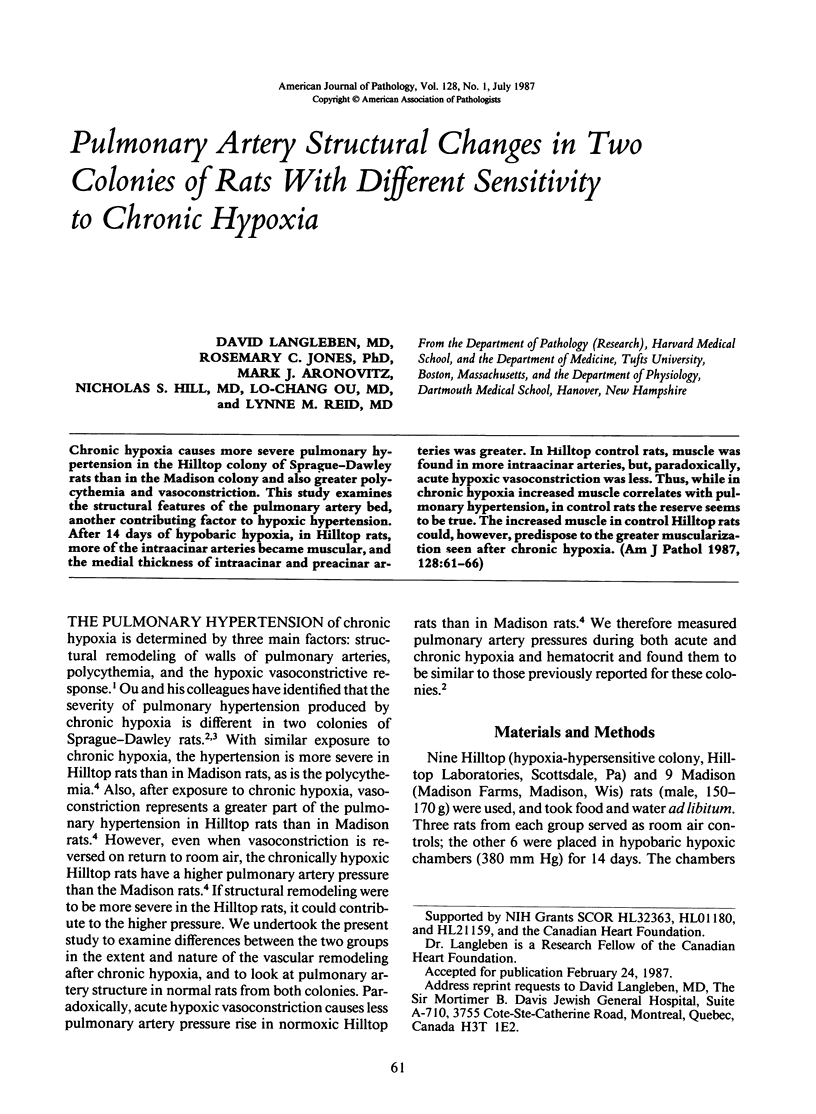
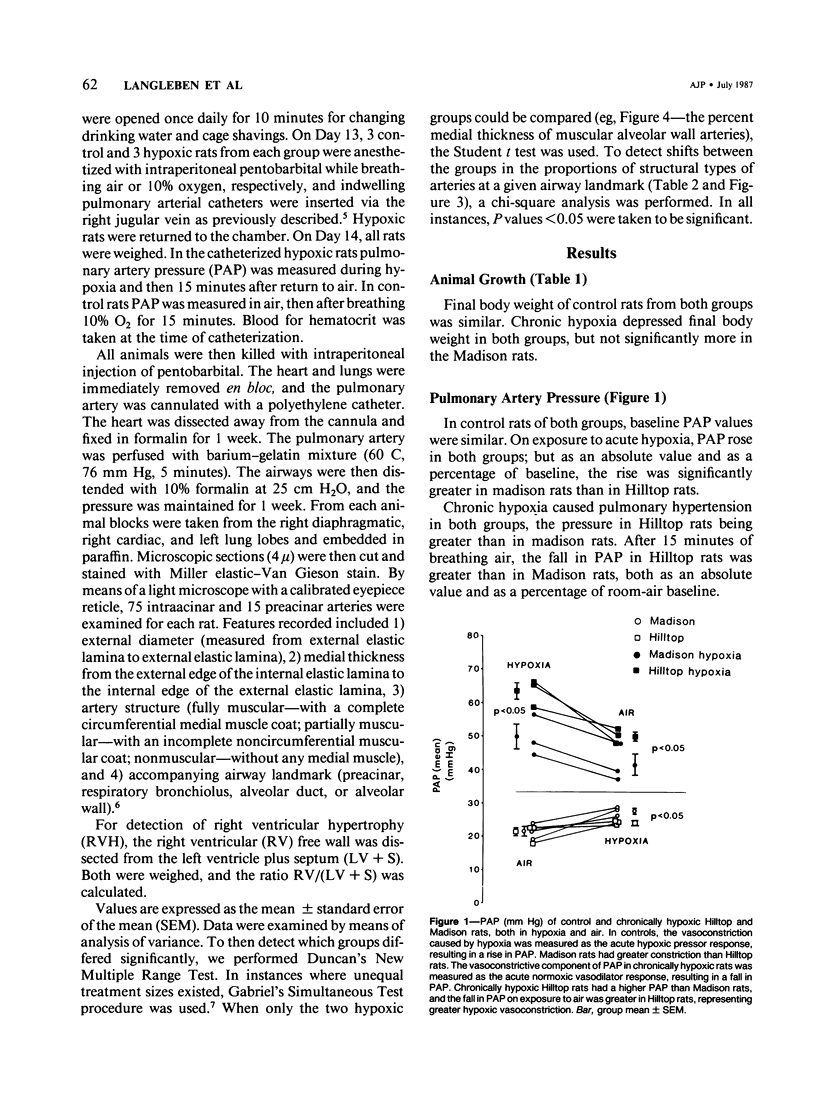
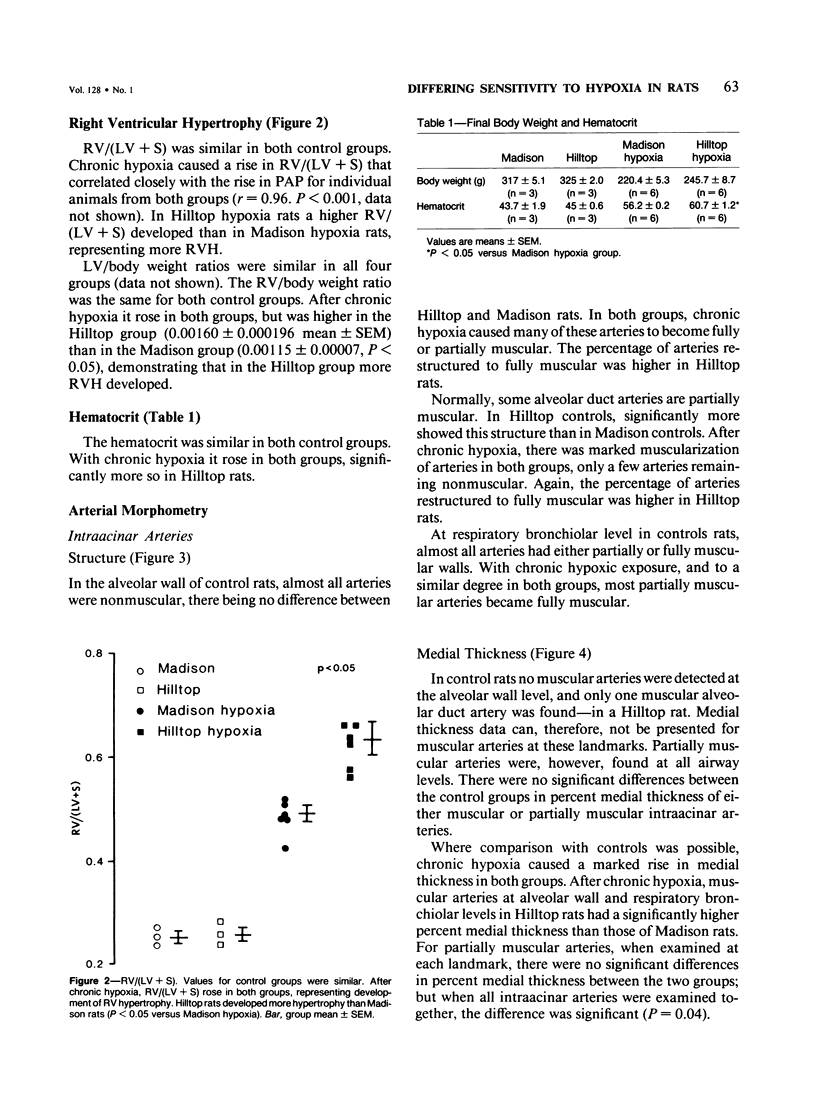
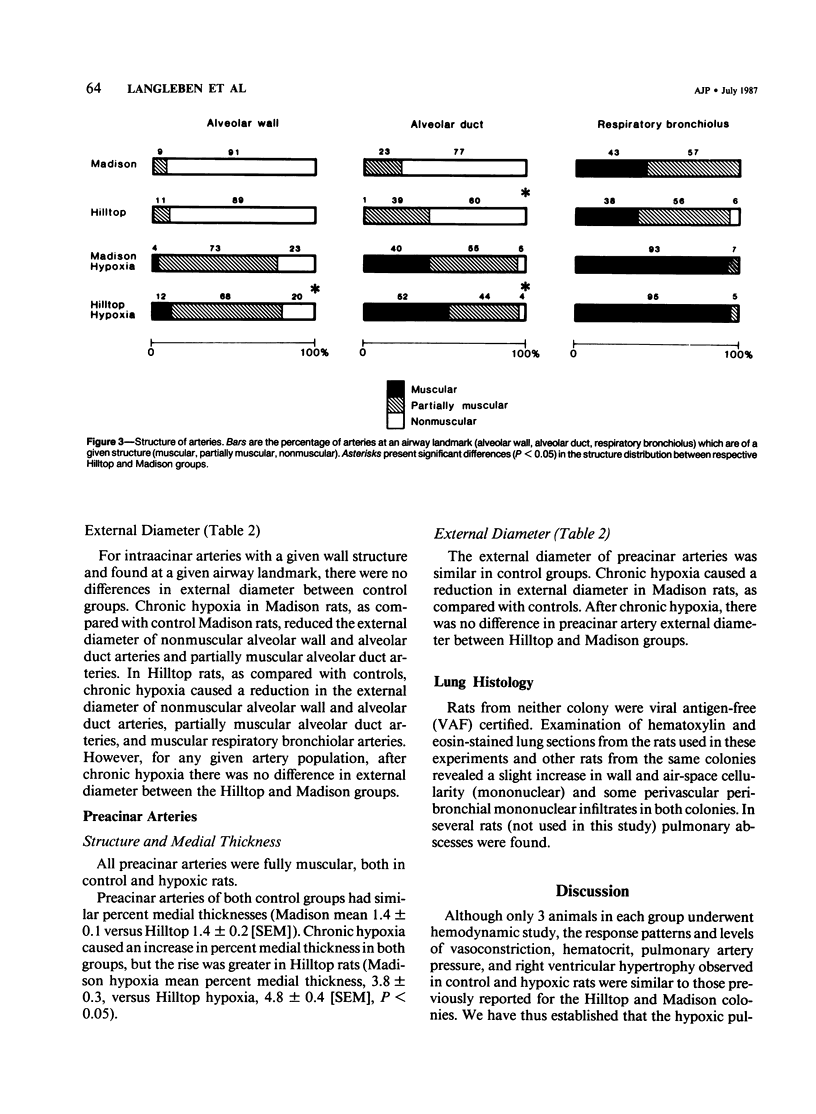
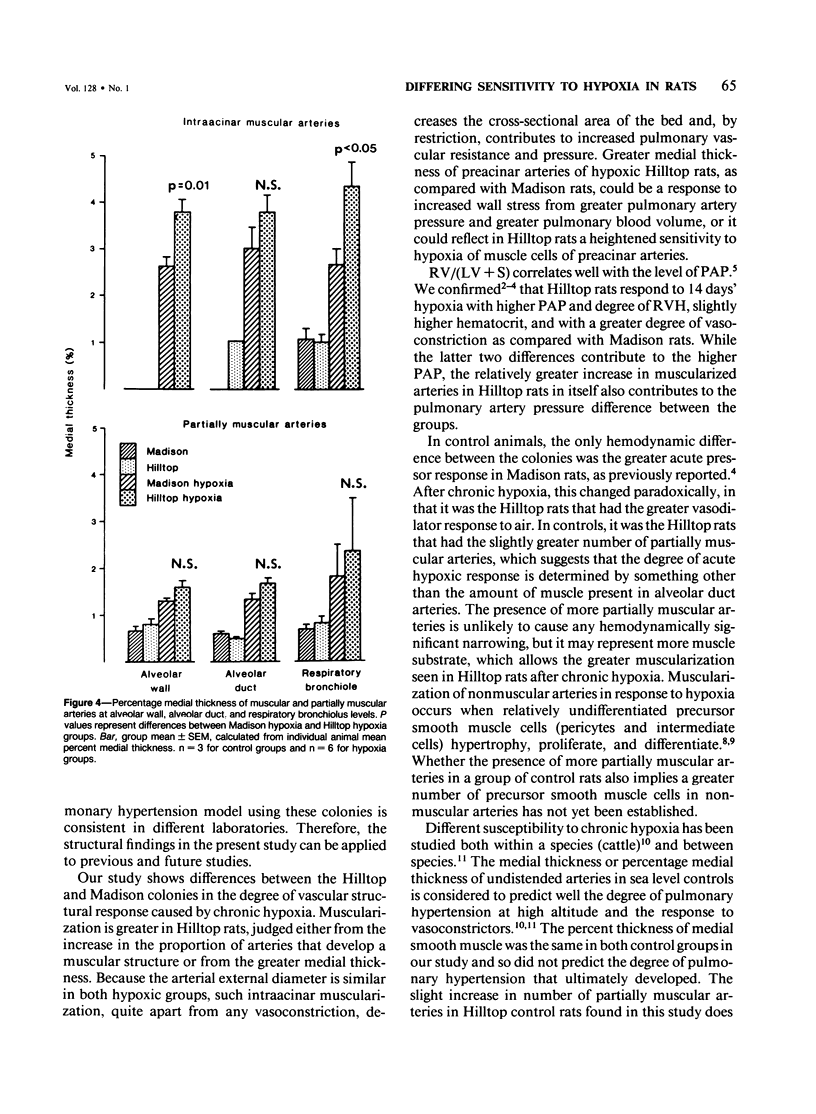
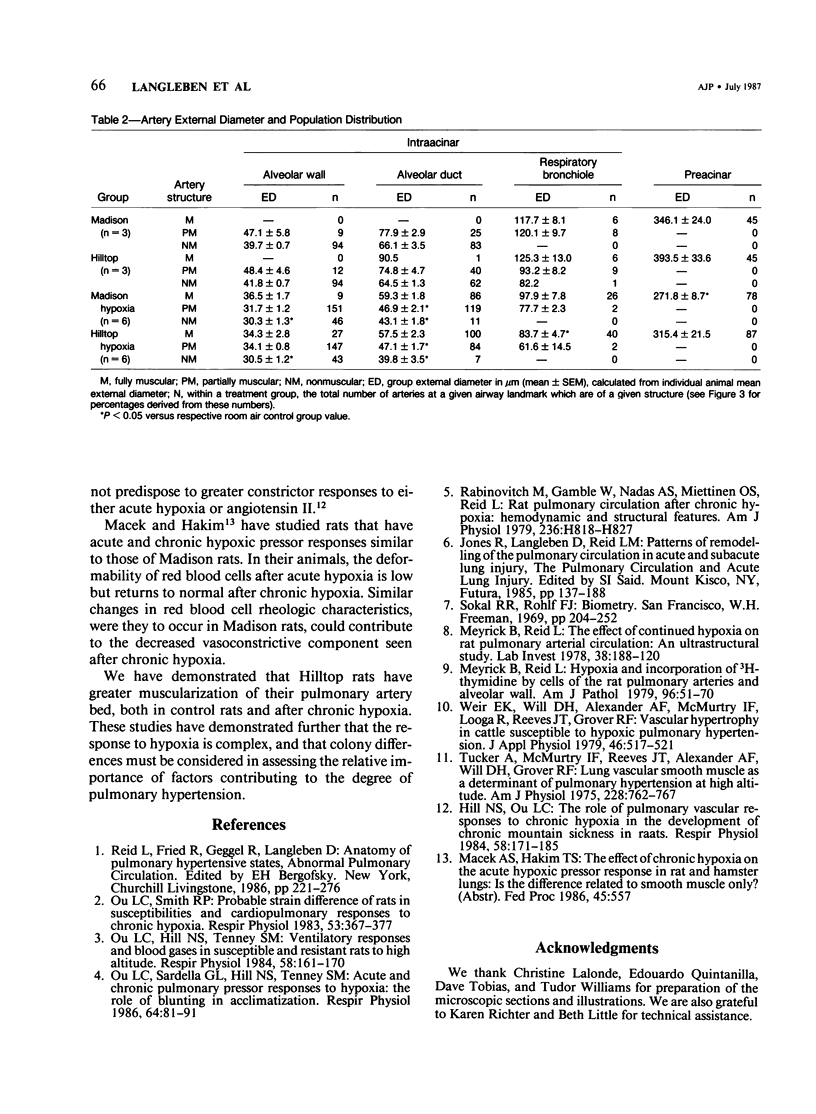
Selected References
These references are in PubMed. This may not be the complete list of references from this article.
- Hill N. S., Ou L. C. The role of pulmonary vascular responses to chronic hypoxia in the development of chronic mountain sickness in rats. Respir Physiol. 1984 Nov;58(2):171–185. doi: 10.1016/0034-5687(84)90146-4. [DOI] [PubMed] [Google Scholar]
- Meyrick B., Reid L. Hypoxia and incorporation of 3H-thymidine by cells of the rat pulmonary arteries and alveolar wall. Am J Pathol. 1979 Jul;96(1):51–70. [PMC free article] [PubMed] [Google Scholar]
- Meyrick B., Reid L. The effect of continued hypoxia on rat pulmonary arterial circulation. An ultrastructural study. Lab Invest. 1978 Feb;38(2):188–200. [PubMed] [Google Scholar]
- Ou L. C., Hill N. S., Tenney S. M. Ventilatory responses and blood gases in susceptible and resistant rats to high altitude. Respir Physiol. 1984 Nov;58(2):161–170. doi: 10.1016/0034-5687(84)90145-2. [DOI] [PubMed] [Google Scholar]
- Ou L. C., Sardella G. L., Hill N. S., Tenney S. M. Acute and chronic pulmonary pressor responses to hypoxia: the role of blunting in acclimatization. Respir Physiol. 1986 Apr;64(1):81–91. doi: 10.1016/0034-5687(86)90062-9. [DOI] [PubMed] [Google Scholar]
- Ou L. C., Smith R. P. Probable strain differences of rats in susceptibilities and cardiopulmonary responses to chronic hypoxia. Respir Physiol. 1983 Sep;53(3):367–377. doi: 10.1016/0034-5687(83)90126-3. [DOI] [PubMed] [Google Scholar]
- Rabinovitch M., Gamble W., Nadas A. S., Miettinen O. S., Reid L. Rat pulmonary circulation after chronic hypoxia: hemodynamic and structural features. Am J Physiol. 1979 Jun;236(6):H818–H827. doi: 10.1152/ajpheart.1979.236.6.H818. [DOI] [PubMed] [Google Scholar]
- Tucker A., McMurtry I. F., Reeves J. T., Alexander A. F., Will D. H., Grover R. F. Lung vascular smooth muscle as a determinant of pulmonary hypertension at high altitude. Am J Physiol. 1975 Mar;228(3):762–767. doi: 10.1152/ajplegacy.1975.228.3.762. [DOI] [PubMed] [Google Scholar]
- Weir E. K., Will D. H., Alexander A. F., McMurtry I. F., Looga R., Reeves J. T., Grover R. F. Vascular hypertrophy in cattle susceptible to hypoxic pulmonary hypertension. J Appl Physiol Respir Environ Exerc Physiol. 1979 Mar;46(3):517–521. doi: 10.1152/jappl.1979.46.3.517. [DOI] [PubMed] [Google Scholar]


